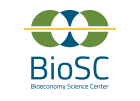Project duration: 2021–2024
Funding: BOOST FUND 2.0, BioSc— Bioeconmy Science Centre


Project Coordinators
- Dr. Till Tiso, iAMB – Istitue for Applied Microbiology
Project Partner
- Prof. Dr. Jaeger & Stephan Thies & Sonja Kubicki, IMET - Molecular Enzyme Technology, HHU Düsseldorf
- Prof. Dr. Blank & Dr. Till Tiso, iAMB - Institute for Applied Microbiology, RWTH Aachen
- Prof. Dr. Büchs & Robert Dinger, AVT.BioVT - Biochemical Engineering, RWTH Aachen
- Prof. Dr. Jupke & Andreas Biselli, AVT.FVT - Fluid Process Engineering, RWTH Aachen
- Prof. Dr. Bröring & Dr. Wustmans, ILR - Technology and Innovation Management in Agribusiness, University of Bonn
Partner from E3T
- Prof. Dr. Henner Hollert
- Dr. Sarah Johann
Project description
The project SurfIn investigates the production of biosurfactants, which are not yet used by the chemical industry. SurfIn integrates strain engineering of biosurfactant producing microbes with bioprocess engineering for enhanced cultivation conditions and upscaling of the fermentation, chemical engineering for the development of sustainable purification strategies, and finally, social and management sciences for the implementation of the developed technology in relevant industries and markets. For possible exploitation of the SurfIn results, industrial experts from world leading companies form part of the consortium.
The two target compounds of SurfIn will be the biosurfactants liamocin and serrawettin W1. Both have not been intensively researched and offer a high potential for dissemination and commercial exploitation. Apart from the use in classical surfactant applications (e.g., detergents) both substances feature further areas for usage. Serrawettin W1 for example has been shown to be applicable in crop protection and both molecules are suited as building blocks for bio-based polymers. As heavy oils, liamocins show similar characteristics during production and purification as sophorolipids, a first class of biosurfactants that are successfully exploited in industry. Liamocins feature a high potential to be produced at industrial scale with less development effort than for the extensively foaming biosurfactants such as rhamnolipids.
E³T will support the project by performing the ecotoxicological characterization of these two promising biosurfactants. E³T implements the GreenToxicology strategy in developmental processes of novel, and sustainable compounds that are elaborated within the context of the BioEconomy Science Center (BioSC). The GreenToxicology concept aims to evaluate the safety and environmental impacts of new products already during early steps of product development and optimization, thus enabling to focus on less toxic products without delay or financial loss. The work builds on long lasting experience with biosurfactants and related products from previous joint projects within the consortium such as GreenToxicConomy.
Related links and literature
- BioSC webpage: https://www.biosc.de/
- Johann, S., Weichert, F. G., Schröer, L., Stratemann, L., Kämpfer, C., Seiler, T.-B., Heger, S., Töpel, A., Sassmann, T., Pich, A., Jakob, F., Schwaneberg, U., Stoffels, P., Phillip, M., Terfrüchte, M., Loeschcke, A., Schipper, K., Feldbrügge, M., Ihling, N., … Hollert, H. (2022). A plea for the integration of Green Toxicology in sustainable bioeconomy strategies–biosurfactants and microgel-based pesticide release systems as examples. Journal of Hazardous Materials, 127800. https://doi.org/10.1016/j.jhazmat.2021.127800
- Crawford, S.E., Hartung, T., Hollert, H., Mathes, B., van Ravenzwaay, B., Steger-Hartmann, T., Studer, C. and Krug, H.F. (2017) Green Toxicology: a strategy for sustainable chemical and material development. Environmental Sciences Europe 29. Open Access unter: https://enveurope.springeropen.com/articles/10.1186/s12302-017-0115-z
- Johann, S., Seiler, T.B., Tiso, T., Bluhm, K., Blank, L.M. and Hollert, H. (2016) Mechanism-specific and whole-organism ecotoxicity of mono-rhamnolipids. Sci Total Environ 548-549, 155-163. https://doi.org/10.1016/j.scitotenv.2016.01.066
- Aktuelles und Presse
- Pressemitteilungen
- Öffentliche Veranstaltungen
- Uni-Publikationen
- Aktuelles Jahrbuch
- UniReport
- Forschung Frankfurt
- Aktuelle Stellenangebote
- Frankfurter Kinder-Uni
- Internationales
- Outgoings
- Erasmus / LLP
- Goethe Welcome Centre (GWC)
- Refugees / Geflüchtete
- Erasmus +
- Sprachenzentrum oder Fremdsprachen
- Goethe Research Academy for Early Career Researchers
- Forschung
- Research Support
- Forschungsprojekte, Kooperationen, Infrastruktur
- Profilbereich Molecular & Translational Medicine
- Profilbereich Structure & Dynamics of Life
- Profilbereich Space, Time & Matter
- Profilbereich Sustainability & Biodiversity
- Profilbereich Orders & Transformations
- Profilbereich Universality & Diversity




